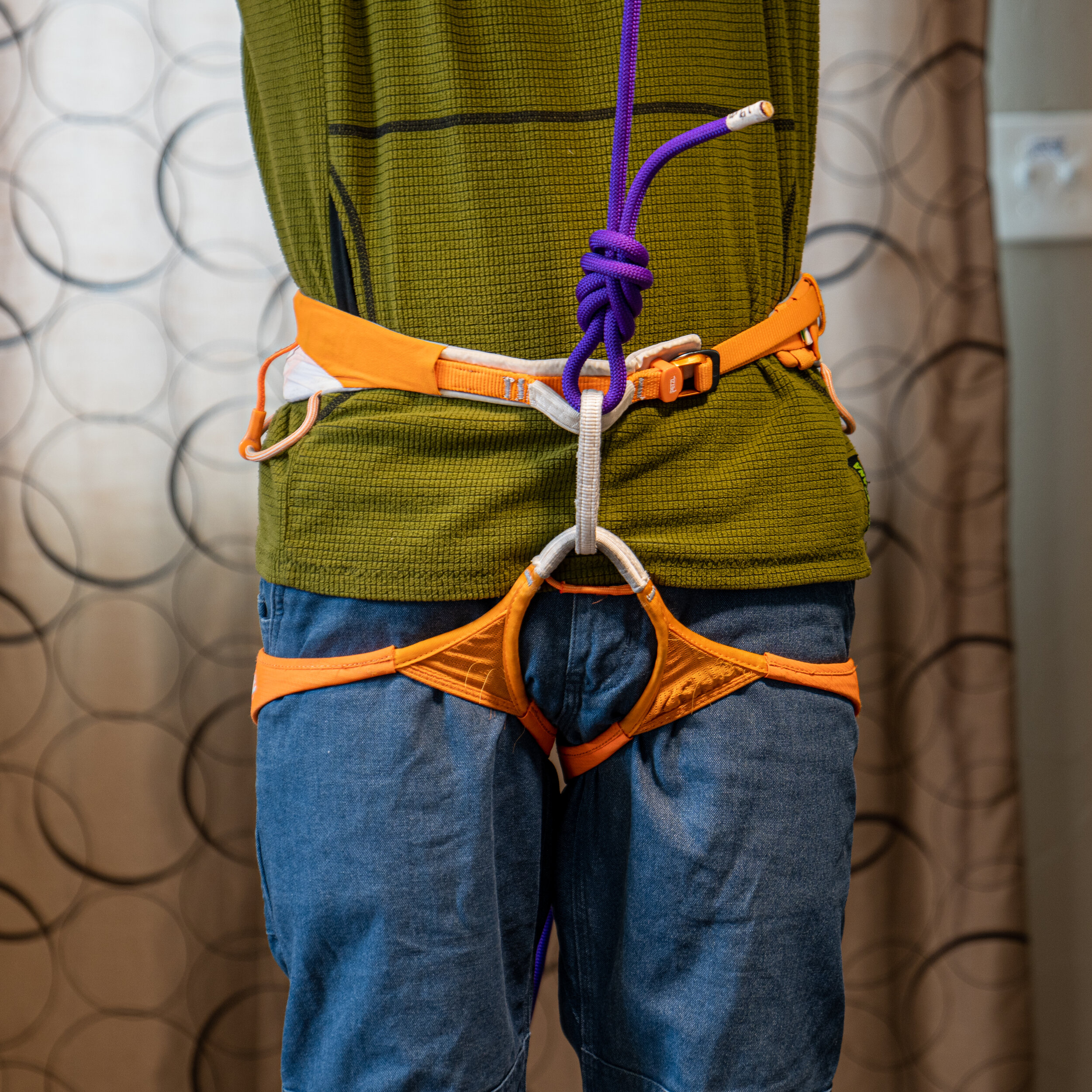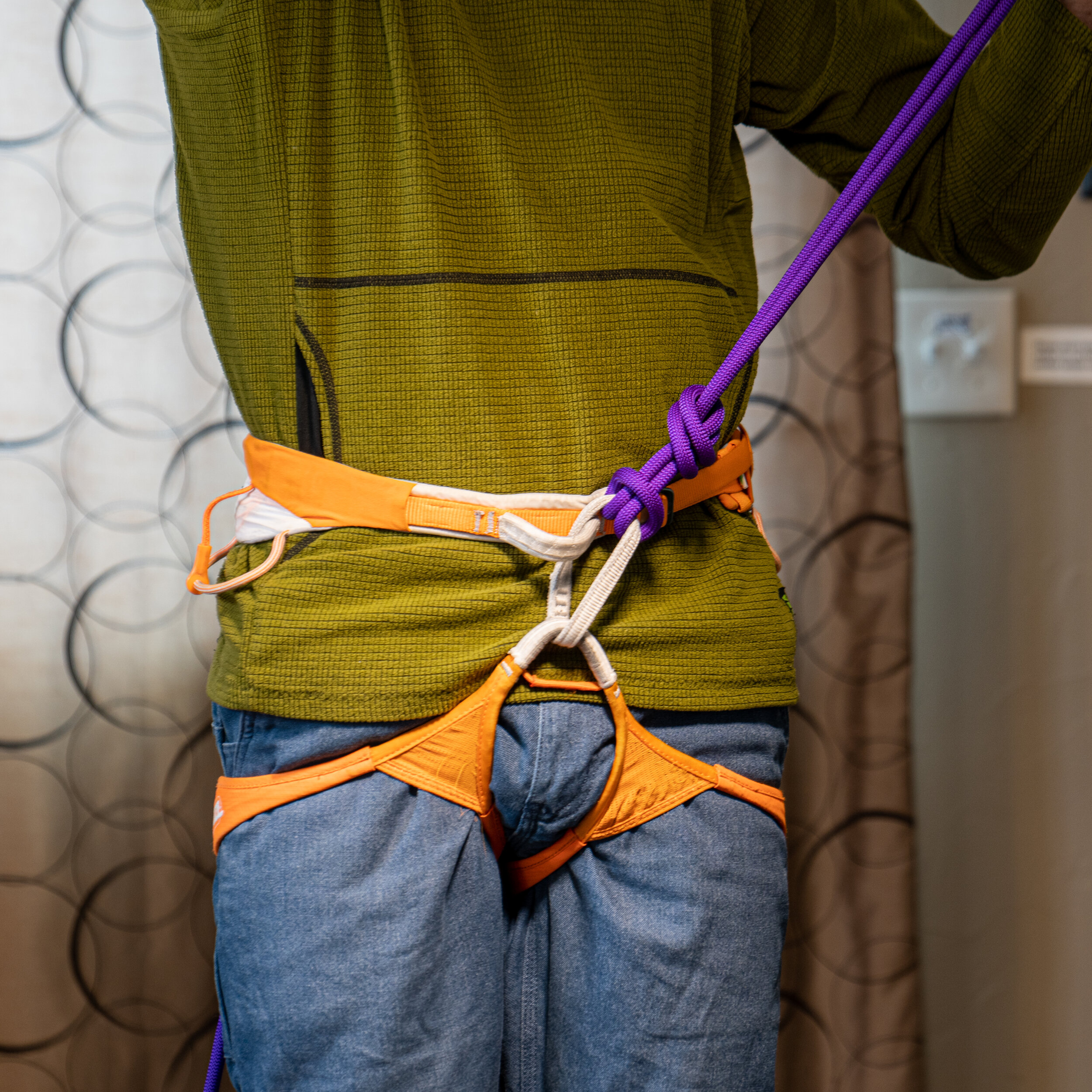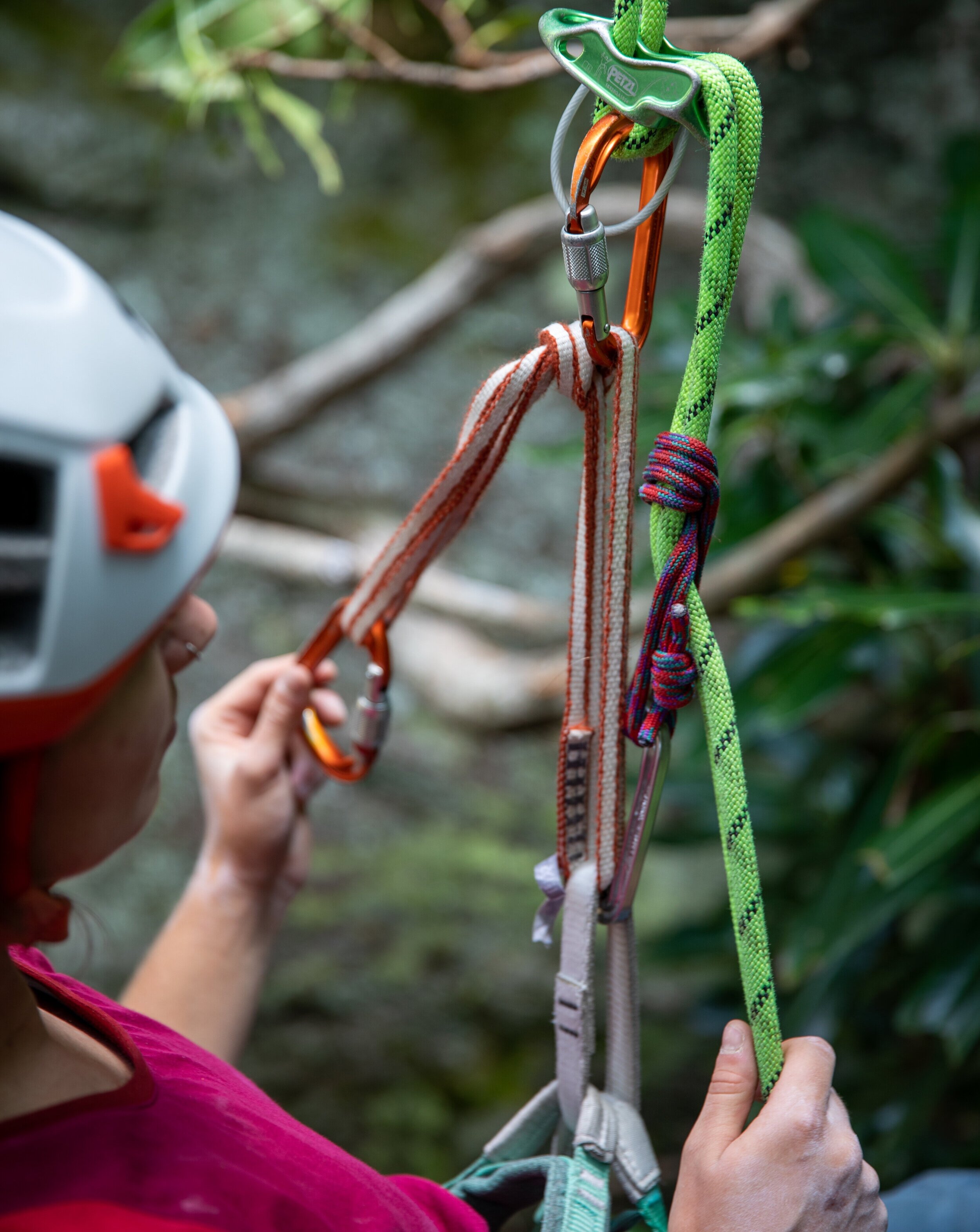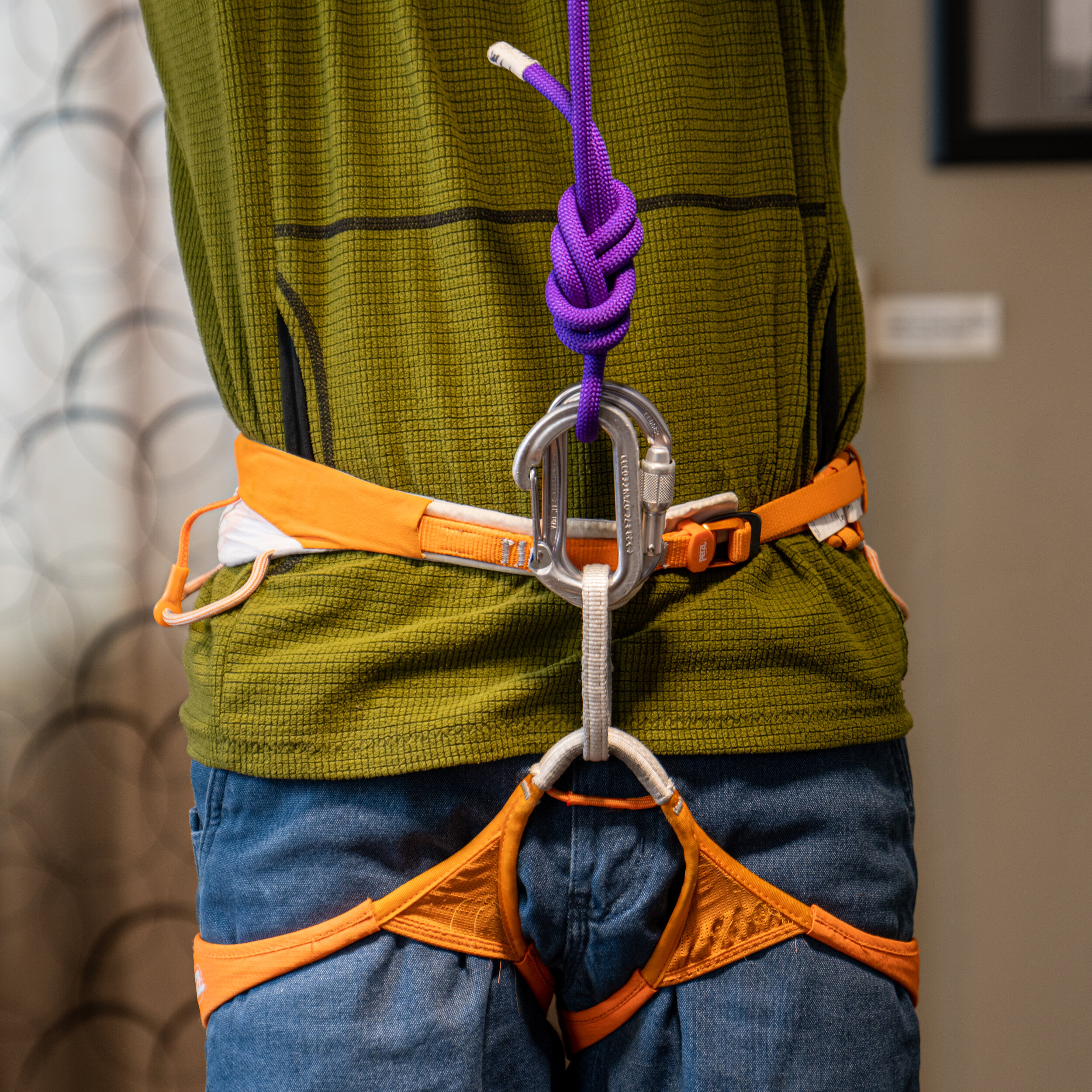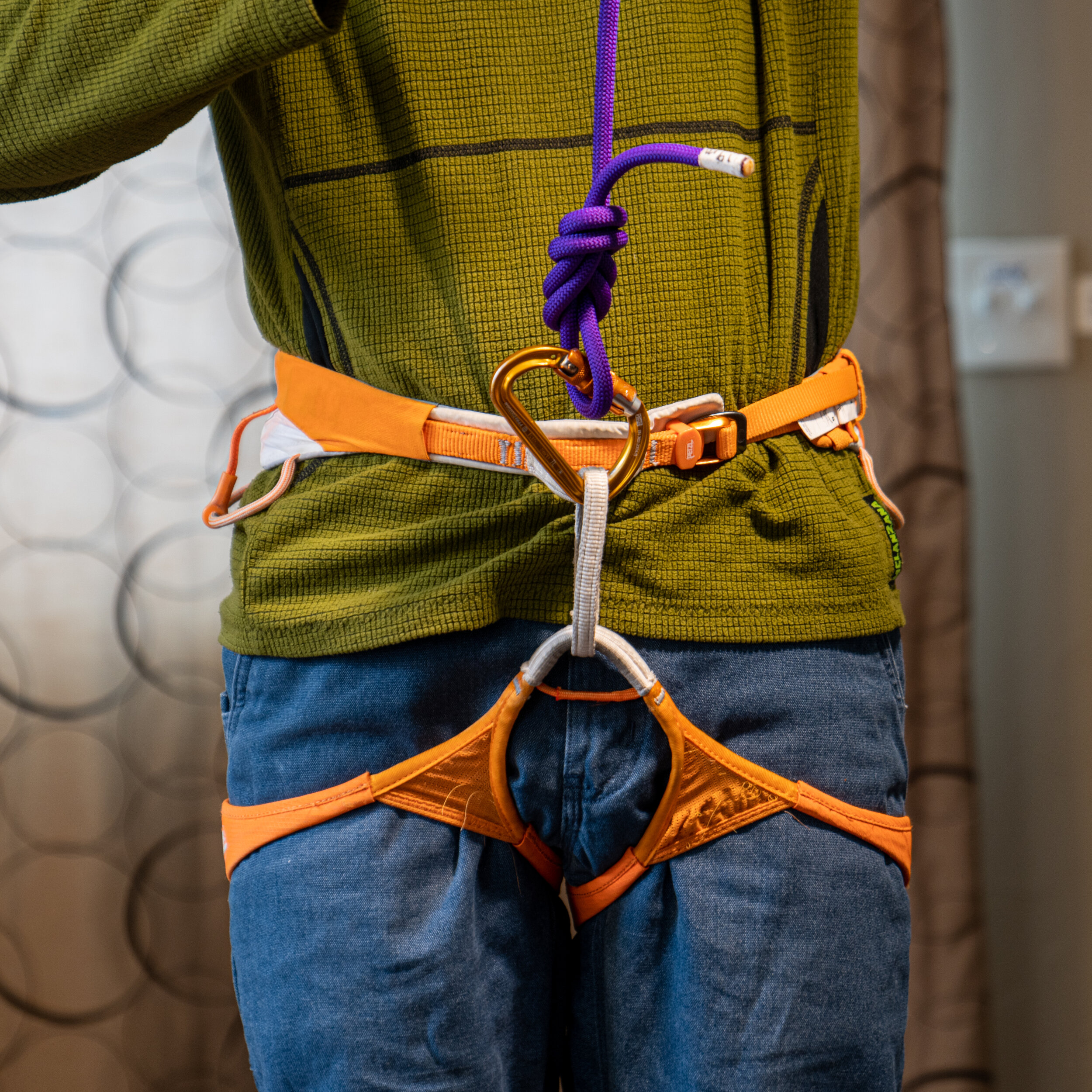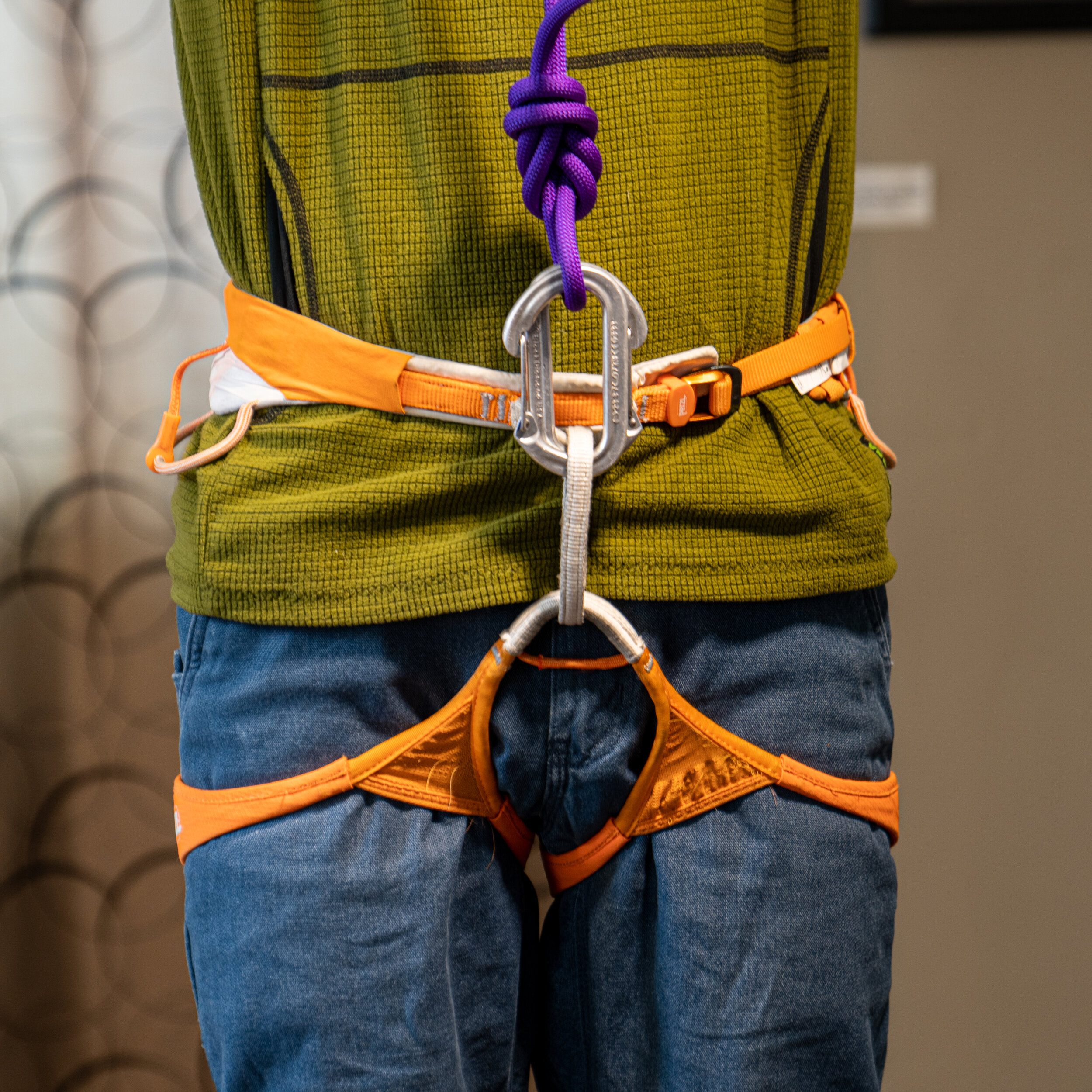The belay loop on a harness still has so many misunderstandings and misnomers about it in both climbing and rescue cultures. We like to put things in a box and this really creates problems in both of these worlds.
So the question comes up a lot about how to use the belay loop. The obvious answer is “to belay”. What about tying in? What about attaching a tether to rappel? It this safe?
It is actually safe. In fact there are many ways to attach to a belay loop and for many different applications.
Here are some examples:
This first one is the simplest of all. Just the figure 8 follow thru. So why might we tie in like this? I do it a lot when ice climbing on the last pitch of the day when I need to clean the route but don’t want to take off a big puffy. This way I don’t miss my two tie in points that I usually use.
Now of course many folks will worry about wearing out the material. I would say this is a concern, but no more so than any other part of the harness. The belay loop is as strong and redundant as anything in the climbing system can get. So even with some wear it would be fine. However the loop rotates. So you are not going to wear it in one spot for very long. If you compare it to the bottom “tie in” point, that doesn’t rotate; it should last as long or longer.
We are also untying it every time we climb. Think about all the people we see have a P.A.S. attached to a belay loop and never take it off. This is girth hitched and does not allow for rotation. But we do not see too many people worrying about this…
The next method uses the girth hitch. I have seen folks use this as an attachment on a glacier. It is good because it has minimal gear, but not so good because it is hard to get out of. This latter characteristic is actually why I would use it though. If you have a younger person on a rope and do not want them fiddling with anything, this can be a great attachment to put your mind at ease.
This style does lock the knot into one place. The wear should be minimal for the day though and really not even something I am worried about. The over hand knot allows some isolation of rope pull from the person in the front and the back.
This girth hitch method is also seen in the Petzl Connect adjust and Petzl recommends that it be attached to the belay loop. This is likely because of the dynamic nature of the rope as well as getting a little more extension.
We can of course basket material to our belay loop as well. Here is a sling that has been basketed and again in this configuration the belay loop can rotate and wear should not be a problem.
Of course we can always use carabiners to attach to our belay loop. I use the rule of “If full body weighting of the carabiner is possible, the breaking strength of the system should be at least 10kn.” This means that if a carabiner were to get cross loaded under a fully weighted system, the cross loading would be around 6-8kn. So another opposite and opposed carabiner must be used.
I do use a single carabiner if it can not be cross loaded and the gate is a tri-action or 3 step opening mechanism. However most of the time I am not carrying a specific carabiner for this purpose and many are quite fiddly with gloves on.
So the belay loop is quite strong and many configurations of attaching to it are safe. One of the main takeaways should be to keep your belay loop free of material when you are not using it. This will help with inspection and wear of the material.
Here is a quote on the strength of belay loops from a study conducted from
“The number of days and falls a harness had suffered also lowered belay-loop strength. Harnesses with 250 or fewer days of use had an average belay-loop strength of 5,732 pounds, compared to 4,629 pounds for those used 451 days or more.” -Rock and Ice Magazine
